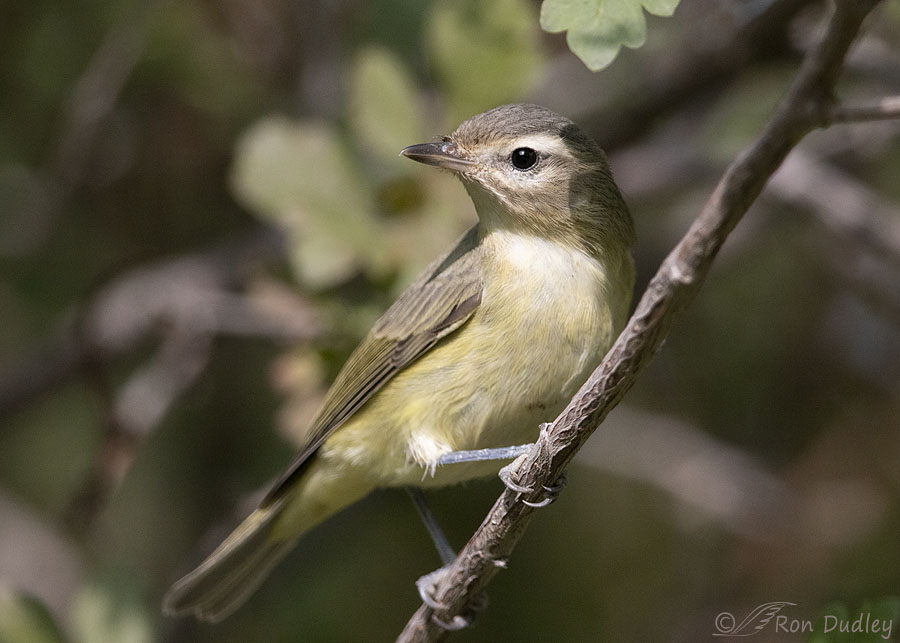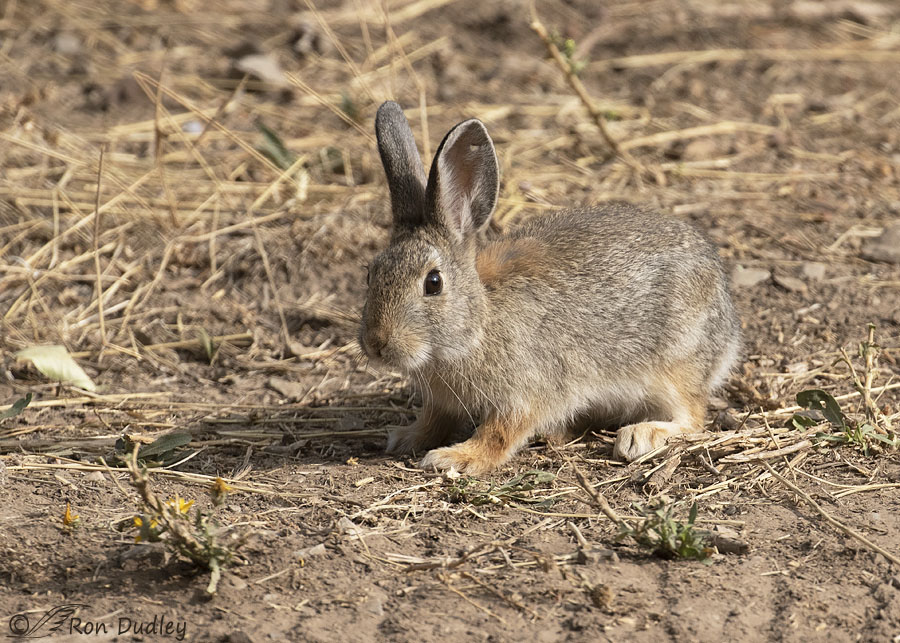When it comes to Warbling Vireos I seem to get one extreme or the other.
In 13 years of bird photography I believe I’ve only photographed a Warbling Vireo three times and most of those photos were mediocre at best, in large part because I was too far away for high quality images.

1/4000, f/5.6, ISO 1600, Canon 7D Mark II, Canon EF 500mm f/4L IS II USM + EF 1.4 III Extender, not baited, set up or called in
Then five days ago in the Stansbury Mountains this one pulled a switcheroo on me and came in too close. This photo is full frame (uncropped) except for a sliver of canvas I removed from the right side of the frame for composition purposes.
I didn’t have time to adjust camera settings so at f/5.6 very little of the vireo is truly sharp. I had my active focus point on the bird’s eye but even its head isn’t tack sharp because I believe I was just a few millimeters closer than the minimum focusing distance of my lens.
I know, I know – this kind of thing happens fairly regularly to every bird photographer but I take it personally when the trickster is a rare bird for me. Blog readers tend to see only my successes but frustrations like this are a bigger part of my life in the field than triumphs ever are so reporting on this incident helps to paint a more accurate picture of what it takes to get some of the photos I do.
When I left the area to look for more birds I was feeling pretty glum because I suspected that my photos of the vireo wouldn’t be quite sharp enough. But a short distance down the road a furry critter brought the beginnings of a smile back to my face.

It was ‘just’ a cottontail but unlike most of them in the mountains this little lagomorph was trusting and even friendly. As ‘he’ was looking for vegetation to chew on he came in so close I had to switch to my ‘baby lens’. I believe he would have taken my mind off of my vireo frustrations for quite some time but when a woodpecker flew by (a Downy I believe) he disappeared like a shot beneath a nearby juniper tree. Spooky little guy.
Five days later I still appreciate him taking my mind off of my vireo experience.
Ron


I think that vireo shot is pretty awesome, even with most of the body softer than you’d like. I truly enjoy seeing an animal fill the frame. Plus, bonus bun-bun saving the day!
Thanks, Marty. I’m glad to have the photo but I wish it were sharper.
Interesting contrast in photo subjects:
One with no (visible) ears; the other is all ears.
One with rictal bristles (you got those even if you think the photo is soft); the other with vibrissae.
I know, lots of other differences; bird/mammal, duh.
Never heard of the Stansbury Mountains. Looks like an amazing place.
Lyle, the Stansbury Mountains are one of the many ‘island mountain ranges’ in the west desert.
Really beautiful photo of one of the birds I feel is not given much attention. The Warbling vireo when it arrives in my area is always such a delight, that song sounds like the bird is extremely happy. The soft gray and white of its’ back is lovely. This close-up allows me to truly appreciate the subtleness of that coloration. Thanks so much for your blog and photos!
Thanks very much, Marisela. I wish I saw them as often as you apparently do.
I do understand your frustration even if I wouldn’t share it. And am glad that Brer Rabbit was able to distract you.
I am grateful for both the beauties you shared today.
EC,, knowing the historic problems Australia has had with rabbit populations ouf of control I wondered if you would be able to appreciate my little cottontail… 🙂
I did.
We have had huge problems with a number of our introduced species – which isn’t their fault. They adapt better than we do. And I deplore some of the methods we have used to address the problems we have brought about ourselves.
What a beautiful little vireo and another species I don’t think I’ve ever seen. Add to that, it’s unlikely I’ll see one in the future. I love the subtle yellows in her/his plumage that pairs delightfully with the soft grays. BEAUTY!!
And oh yes, the cottontail, but for completely different reasons. And yes, they CAN skedaddle when necessary 😉 But overall, the little twerps owe me a bunch of garden plants!
Laura, I know very little about Warbling Vireos but as far as I could tell from the field guides this one is a little more yellow than most.
I’ve never before seen a Warbling Vireo’s face up close. Thanks! Now I’ll go listen to the Cornell recording to see if they really warble.
Sallie, I think I read somewhere last night that they don’t really warble.
Enjoyed both photos! I would take the vireo shot anytime…oh… to have your problem! 🙂 The cottontail…cute little one. I usually have a few all the time and always like watching them…funny to see them chasing each other across the patio.
Kathy, I’m glad I have that vireo shot if only because I have so few of them. But I can’t help but think of what could have been.
As always great shots!
The cottontail looks like a young one.
Most if not all our migrants have left. Second night of freezing temps.
We are experiencing no precipitation in over two weeks, providing 0.2 mm as almost nothing for plants. Looking at the landscape it looks green, but that is certainly not what the dryness of the soil tells you. We need a good soaking!
A farmer friend here describes that green as a ‘green drought’ Dick. Sadly we experience it often. And I believe will continue to do so thanks at least in part to successive governments who trust economists more than scientists.
Thanks, Dick. 47° here when I got up but I this morning I saw 35° at a higher elevation.
I’ll take the Viero shot! 😀 Cottontails are always fun even if troublesome for the garden now and then…….😉
Warm and windy this morning BUT smoke did clear out for now with a bit of rain yesterday……..
I’m sure I wouldn’t like them as much if they nibbled away at my garden, Judy. Pretty smoky here.
From a photographer of lesser skill and experience – that Viero’s head looks pretty sharp to me. And yes, when those little cottontails show up it always gives me a smile. They can sometimes be very entertaining to watch. And speaking of things showing up, yesterday I ran into a skunk for the first time here in 14 years of photography and hiking. He was along one of our mostly dry creeks getting a drink at a spot where there was a small amount of water.
Got a few shots of him, but for sure kept my distance.
Everett, the softness of the head is probably more apparent at a larger resolution. It isn’t bad but it’s still soft and most of the rest of the bird is softer still.
I see skunks only occasionally. Smell them far more often… 🙂